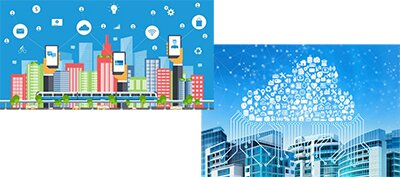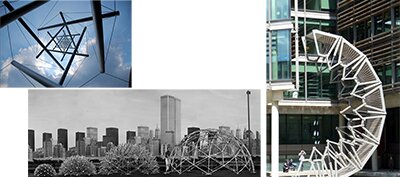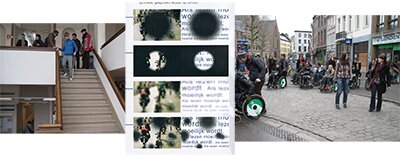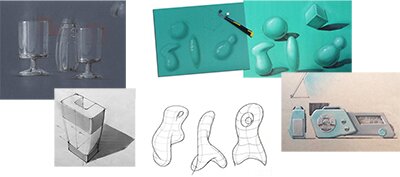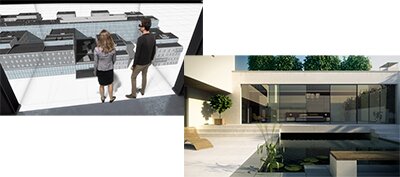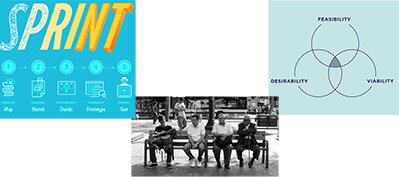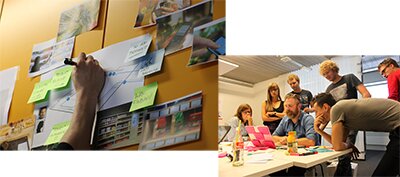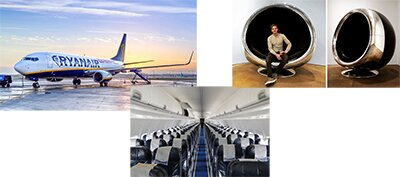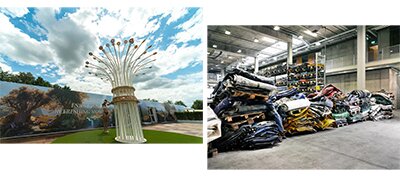#1 Resilient communication
by dr Kristof Vaes, Wim Maes, Nele Simons and Sven Verheyen
Communication networks and services play a vital role in our modern lives. Not only does modern society depend on these services in terms of availability but also in terms of proper functioning in all circumstances. The reliability, resilience and availability of communication networks and services is as crucial as ever. (Journal of Network and Systems Management, 2016, volume 24, issue 3, pp 445-448)
How do we communicate about resilience and how do we make our communication resilient?
This workshop will be in charge of the communication about resilience during the International Design Workshop week ‘Re-ACT by Design’. We will cover the whole event using various online communication tools, such as a website and social media. The communication will be ‘instant publishing’, which means that we will strive for dynamic real-time media coverage of the ongoing events in the different workshops. We will reflect on how we can cover the essence of the workshop processes and how we can strategically tell the story of the common theme ‘resilience’.
At the same time, we will also explore how we can make our communication about the event resilient: how can we make our communication available and accessible for everyone (also people who are not connected to our networks or any digital network in general) through communication networks/services that are reliable and resilient in all circumstances? We will explore different online and offline communication tools to go into the city and ‘pop up’ with visualisations and installations that represent the various workshops in order to communicate our message to the public and the press.
The aim of the workshop is to create visibility and to inform not only the participating students of the workshop week, other students and staff of the Faculty of Design Sciences, but also external stakeholders and the wider public.
This workshop is looking specifically for
- students with knowledge of and skills in website building, video making/editing, photography, drawing;
- intensive social media users;
- students who like to challenge communication in words and visuals.
#2 Deployable structures
by Roland Fuhrmann
Deployment is the basic attribute of living organisms. They grow, move, spread and fold (beetle wings). In their deployment they are resilient and capable of reacting to changes quickly. The history of humankind is rich with examples of deployable structures, such as Indian tepees, Mongolian yurts, cabriolets and umbrellas.
In the 20th century, movements such as the Italian Futurists, the Soviet Constructivists and the German Bauhaus School generated new ideas about kinetic art and deployable design. In the 1950s, with space exploration, deployable structures became a point of interest. Large structures of technical equipment had to be packed into spacecraft and deployed in space. Such structures are capable of extensive changes in their configuration. Despite transformation, they are stable, strong and durable. Due to their articulations or material properties they are flexible, adaptable and resilient. Today, there exists a vast range of deployable structures, developed not only by engineers, designers and architects, but also in the research field of biometrics, medicine and even in art.
Deployable structures could be classified by their components into rigid (solid surface, latticework and scissor shapes), deformable (inflatables, fabrics), flexible (STEMs – Storable Tubular Extendible Member) and combined structures.
This theme encompasses a broad sphere of great possibilities. Students are invited to create their own deployable structure, designed for an imaginary application in model scale or even as a usable object in a manageable size.
#3 Resilience and handicap
by Carl Asaert and Michel Huybrechts
Persons with a handicap are condemned to resilience in order to operate independent in the built environment.
The goal of Design for All (DfA) or Universal Design (UD) is to design the built environment in such a way that obstacles are minimised.
Designers can play a crucial role, hence it is necessary that they understand which obstacles make it impossible or difficult to operate normally and independent.
They can achieve this aim through study, but a personal experience is often a better trigger.
If one is confronted personally with handicap, one experiences that even the smallest default of the built environment create an enormous limitation.
The workshop aims to make the participants aware of the need to create an accessible environment.
This aim is achieved at one side through theoretical approaches, at the other side through confrontation by experience, together with experience experts.
The visit to a demonstration house, in which different possible solutions are presented, shows that it is possible to create a barrier free environment.
Finally, the participants will have to design an integral accessible object.
The workshop is organised by the WAT (Workgroup Antwerp Accessible).
WAT is a workgroup of the advisory council for people with handicap of the city of Antwerp. It was created 25 years ago when Antwerp was Cultural Capital of Europe.
WAT advises city services, organises training for city staff, students and organisations.
#4 Sketching techniques and a disruptive design project
by Jan Willem Hoftijzer
When designing objects or clothes or buildings or systems, all steps and stages of the process require visual communication; design ideas and concepts can only be discussed, assessed, liked or disliked in case they have been depicted in sketches or drawings.
From a designer’s perspective, sketching functions as a language and provides a certain independency: sketching helps you to visually suggest ideas and solutions, either representational or visionary. It enables you to communicate with everybody involved: partners, users, managers, clients.
With that in mind, this series of workshop sessions offers a variety of professional sketching techniques, materials and tools. These techniques will stimulate your creativity, and help you to apply clarity, composition and ‘chairoscuro’ to your design sketches.
The series of workshop sessions is built around a challenging trajectory of design exploration, explanation and even end-user participation. Each stage of the process to run will be executed using specific and suitable visualization techniques.
#5 Resilience & rehabilitation
by Stefan Vandervelden
This workshop will be organised in collaboration with the organisation ‘To Walk Again’ and rehabilitation center ‘Revalution‘. They both focus on rehabilitation of people with a physical disability in order to keep them healthy and positive, and to help them (re-)integrate. The center combines therapy, technology and research with a strong focus on innovation.
People facing paralysis or an amputation after an accident are confronted with a sudden impact on their life and abilities. Rehabilitation can boost their resilience and -vice versa- resilience can give strength to the patient. They often show a surprisingly positive and inspiring mind-set.
The objective of the workshop will be to empathize with the patients and to find ways to improve the rehabilitation process or to simply improve facets of their lives. The students will be divided in small groups and will spend half a day in the Revalution center. Each group will follow a patient during their specific training and there will be time to talk about the effects on their lives and the limits caused by the disability. This will be a starting point for a design sprint that will take you in one week from defining a goal to a (digital) prototype of a product or concept, all in close contact with the patient.
You are free to go into any direction you want: products, digital aids, interior design… as long as it is solving a need you detect. You can come up with ways to improve the revalidation process/environment or with solutions for the everyday life of the patient.
#6 DesignSprinting: a 1 week challenge
by Dennis De Clercq
This workshop will briefly explain the mindset/methodology of design thinking, paired with the concept of an innovation Sprint week. After a quick intro, you will experience first-hand how you can effectively observe and analyse social constructs or behaviour by using a variety of tools and techniques. This is an important phase at the start of every innovation project, because during the “empathize” phase you get to know your audience which will help you in defining a problem statement. We will finish the workshop by building various persona’s and identify their needs and frustrations which will help you through the rest of the week.
Every design thinker will tell you that no innovation track is a linear course of phases or events. It’s a constant interaction between trying, validating and learning. Deciding when to let go of a certain concept or premise and restarting the process is a form of resilience.
#7 Taking the plunge
by Tom Verbist and Ward Vancoppenolle
“If you take the plunge, you decide to do something or commit yourself even though you know there is an element of risk involved.“
Taking the plunge is exactly what you will do in this workshop.
Designers, innovators and creative minds frequently operate in the unknown.
We have to deal with ambiguity, new skills and new environments. This requires resilience.
In this social experiment, you will learn how to deal with surprise, collaboration and time.
It will provide you with valuable insights in resilience and experiences for your professional life.
You will work in small teams and will be asked to document your journey throughout the week.
If you consider yourself to be entrepreneurial and you like challenges, this workshop might be something for you.
#8 A Living Lab
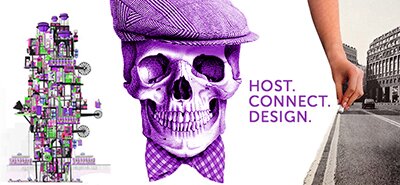
by Vincent Nulens and Jelke Stoop
The building on Paardenmarkt is being fitted out as a new campus for the Product Development students. The challenge is to turn a school into a ‘living lab’. A cultural, artistic and technological breeding ground for innovative designs.
Host. Connect. Design. We are developing three scenarios on the basis of these fundamentals. Each scenario responds to recent trends: neo-nonsense (highly individual tone of voice), phygital (a blend of analogue and digital), gen vizz (pronounced visual style and multi-sensory elements).
1. Host
On this campus we host a varied and critical public. Students from home and abroad looking for a stimulating learning environment. Companies looking for fruitful cooperation and new products. What identity do we want to project? How do we welcome our guests? How do we create a platform for exchange and interaction?
2. Connect
The PO Campus is more than just a place of learning. You also come to collaborate and relax. How do we balance effort with relaxation? How can we turn a corridor, the atrium or a stairwell into a warm nest?
3.Design
The PO Campus is intended to be a lively studio that makes itself ready for the society of the future. A fine, inspiring and flexible place where students feel at home, dare to experiment and want to work hard.
We will let our designs come to life on location. We will present our models, photos and sketches in the space itself. We will play with perspectives and create an old school version of augmented reality!
#9 When aircraft go to die
by Stein Janssens and Toon Wassenberg
Resilience is the inherent strength of an entity to better resist stress and shock, according to the dictionary. Few things are designed with higher requirements of inherent strength than airplanes. Strong and lightweight. Resisting all kinds of impact. With nothing on board that shouldn’t be there and full of single purpose high-end components. This high grade of specialization is creating huge challenges when aircraft are taken out of service. Parts than can be reused in active aircraft keep high values, but what to do with the rest?
Aerocircular is a Belgian start-up that will be dismantling large passenger aircraft this year. Components can be serviced and reused and in the end, materials can be processed and recycled. The largest challenge lies in rethinking structural components of the aircraft: why scrapping a wing, a tail or the fuselage to mixed aluminium chips when the well designed, strong and light structures can be given a new life? In buildings, furniture, consumer goods,…? The same goes for passenger seats, luggage bins, galleys, floor and side panels and so on.
Considering the continuous flow of aircraft (> 20/year) that will be dismantled, Aerocircular is looking for solutions leading towards repeatable production and not that much for one-shot destinations. In a circular economy approach we aim at avoiding or postponing recycling as much as possible.
During the international workshop week, we would like to challenge students to look beyond reusing aircraft components as wall art or as working desks by just placing a glass sheet on top of them.
More: www.aerocircular.green
#10 An upcycling adventure with banners... for Love Tomorrow & Tomorrowland
by Lori Maes, Ronald Heinen, Kristof Vaes and Els Dubois
Love Tomorrow & Tomorrowland are all about love and the commitment to create a reality that relates positively with Mother Nature and contributes to the well-being of the next generations. Love Tomorrow flanks the Tomorrowland festival and turns these promises into reality. Responsibility, Nature, Innovation, Health and Respect are the five circles of Love Tomorrow. The Heart is the inner circle, representing passion, love and respect.
The challenge…
Every year large pieces of waterproof cloth (called banner) help transforming the Tomorrowland festival into its fairytale reality. These banners are used to decorate, sign information for crew and visitors, protect and divide podia and festival hardware. After the festival, unfortunately, not all banners can be used for the next edition. Because of that, materials are used in an inefficient way. An alternative solution should be invented. In the meanwhile, the banners that can’t be reused, maintain a lot of their beauty and quality. They deserve a second life! We want to challenge you to take these banners out of their context, and change their meaning and identity. How can we transform these sturdy fabrics into surprising products with social relevance?
This is the plan:
- We’ll get a bunch of banners with lovely Tomorrowland prints on it.
- We try out how we can ‘build’ with them and connect them without stitching or gluing, using the unique strengths of the material!
- We sketch tons of great ideas and present them to Love Tomorrow in the Tomorrowland headquarters
- …and then we build the best concept, for real ;-)
